Parking is an absolute necessity when driving in Japan. There are several types of parking that are unique to Japan that are not found in the countries where we usually live. In this article, we will introduce 4 main types: gated, lock plate, automatic, and parking meter. After reading this article, I believe you will never be in a panic about parking in Japan!
Gated parking
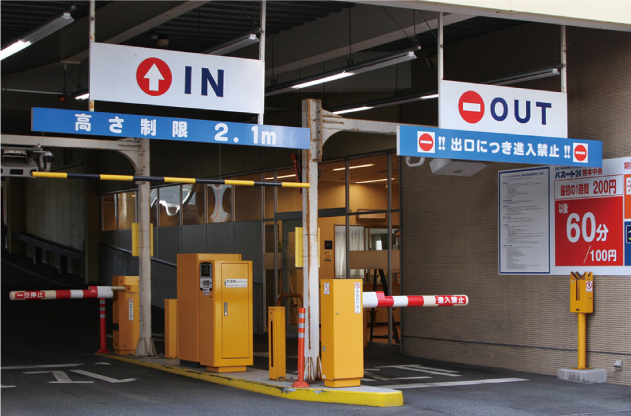
Gated parking is often seen outside of Japan and uses gates or bars (barriers) to control vehicle entry and exit. This prevents unauthorized vehicles from entering and controls the use of parking spaces. Specifically, the following features and uses are available
Gated Parking Features
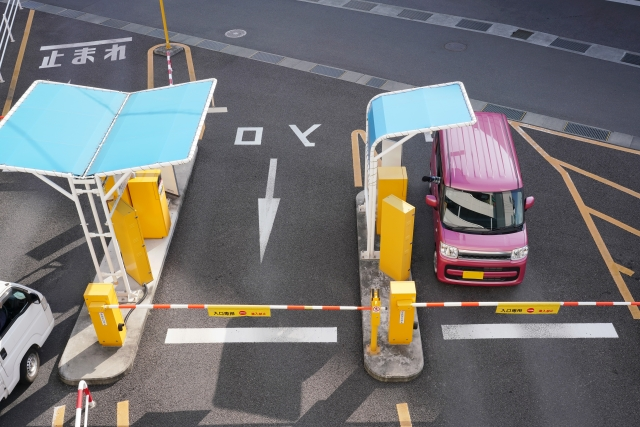
- Installation of gates and bars: Gates or barriers (bars) open and close automatically when vehicles enter or exit.
- Fee system: There are a variety of fee payment methods, including those where parking fees are paid in front of the gate (pre-payment type) or upon exit (post-payment type). Payment may be made by cash, credit card, or traffic IC card. If there are linked facilities, do not forget to take your parking ticket with you, as discounts are available.
- Manage parking space: In some cases, a system is installed that displays available spaces in the parking lot in real time, making it easier to find a place to park your car.
How to Use Gated Parking Lots
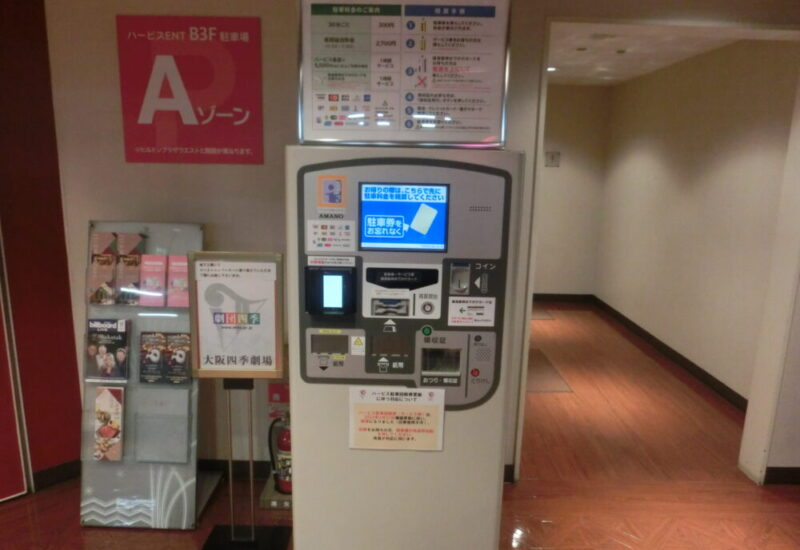
1. Upon entry
- Open and close the gate: When you arrive at the parking lot, stop in front of the gate. Press the “Find Parking Ticket” button and take your parking ticket from the machine.
2. Park in the parking space
- Check for available space: If there is an available space in the parking lot, check it and park. If there are few available spaces, a guide board or ramp may indicate an open space.
- PARKING: After parking within the parking lot, check the locks before getting out of the vehicle once the vehicle is parked.
3. When exiting
- Pay the fee: Pay the parking fee in advance at the fee payment machine located in the parking lot. The machines accept cash and cards, and may also support traffic IC cards and QR code payment. If not, pay at the gate.
- Gate opening: After paying, the gate will open, so approach the gate with your vehicle and enter directly. The gate may open automatically or manually.
4. Notes
- Check your parking time: It is important to check your parking time in advance, as you may be charged an additional fee if you exceed a certain amount of time.
- Lost or faulty card: Please be careful not to lose your parking ticket. If you lose it, please contact the facility manager.
Lock plate parking
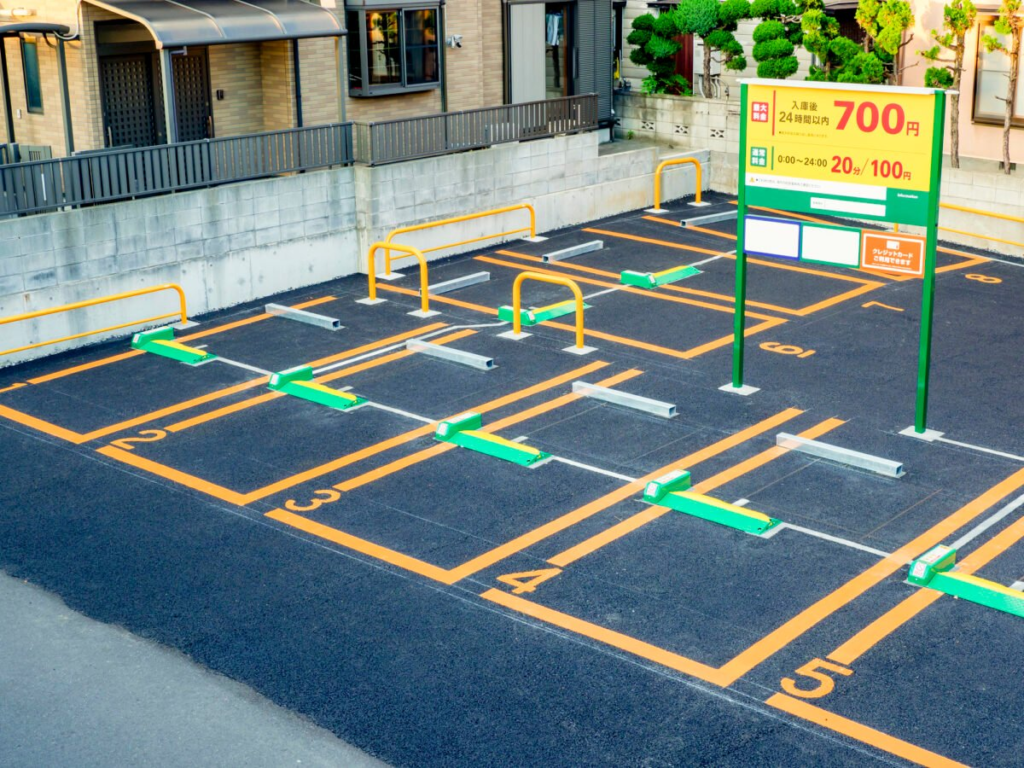
Lock plate parking is a parking system that uses a mechanical device called a “lock plate (lock bar)” to secure the vehicle to the parking space when the vehicle is parked. This system is particularly common in urban areas. It is not found in other countries and is quite widespread in Japan.
Lock plate parking Features
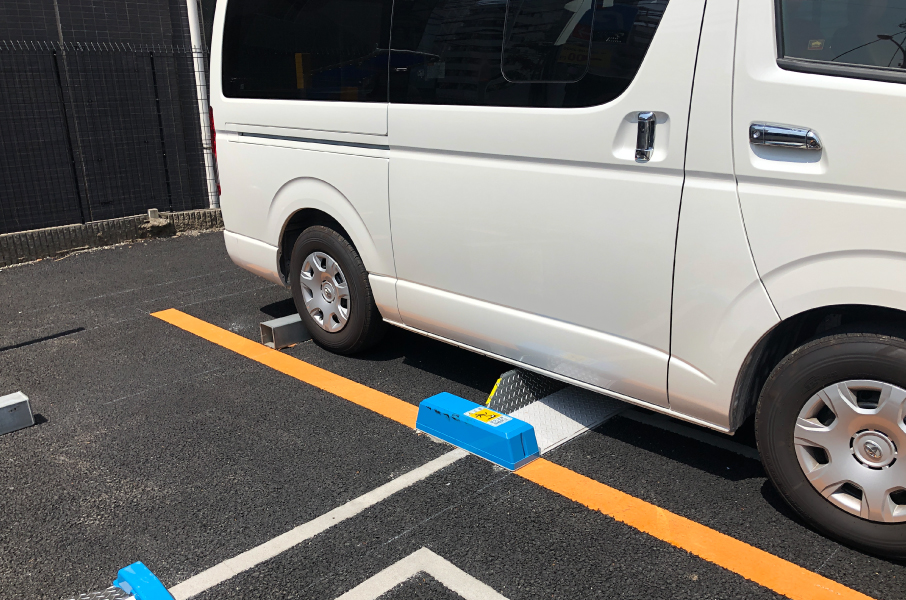
- Fixation by lock plate (lock bar)
- Locking plates installed on the floor of the parking lot automatically come up and secure the tires after the vehicle is parked. This locks the parked vehicle so that it cannot move.
- After the vehicle is parked, the lock plate is wedged under the vehicle (between the front and rear tires) to prevent the vehicle from moving. 2.
- takes some getting used to
- The lock plate is on the ground and must be climbed over by the car, which may be confusing at first. You need to step on the accelerator pedal a little harder to get over the rock plate. However, you need to step on the brake as soon as you get over the rock plate because the car stop will come soon.
How to use a lock plate parking space
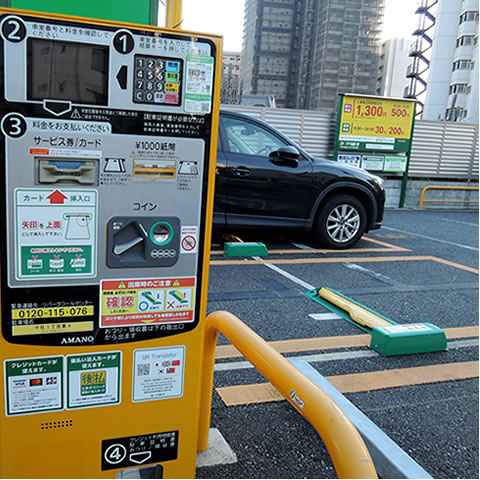
Enter the parking space
- Park your car in the available slot. Unless otherwise specified, back your vehicle in.
2. Park your vehicle
- PARKING BEYOND THE LOCKBOARD: Park your vehicle in the designated parking space. At this time, make sure you are completely over the lock plate. If it is over the lock plate, the machine may break.
- AUTOMATIC LOCKING PLATE ACTIVATION: When parked, the locking plate will automatically raise to prevent the vehicle from exiting. While locked, the vehicle cannot be moved.
3. When exiting the garage
- Locking the lock plate: To unlock the lock plate, you must settle your account. Enter the number of your car compartment written on the ground at the payment machine and pay the money. Please note that if you enter a different number here, you will be paying for someone else’s car.
- After you have paid, the lock plate will automatically lower. Confirm that the lock plate has been lowered, and move your car.
4. Cautions
- If the lock plate does not release: If you fail to settle your account or if the lock plate does not release, you must contact the management office for resolution. In most cases, the phone number is listed on the parking sign.
- Check vehicle operation: Before leaving the parking lot, make sure your car is completely free from the lock plate.
- Recently, an increasing number of parking lots do not have lock plates. These parking lots use cameras to capture the cars. Be sure to settle your account and exit the garage even if there is no lock plate.
- If there is a cooperating facility, you will be issued a parking certificate and receive a discount coupon if you bring it with you. Go to the checkout machine, enter your car room number, and press the “Parking Certificate” button, and you will receive a receipt. Don’t forget to bring it with you!
Automatic parking
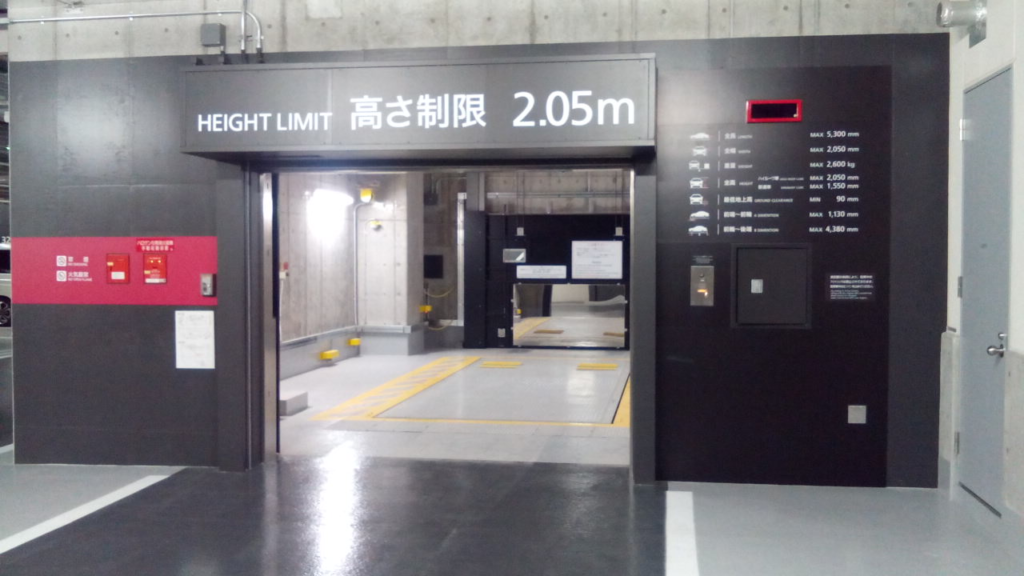
Automatic parking is the easiest to park in and there is no need to worry about others crashing into your car.
Automatic parking is a form of parking that uses a system to automatically store vehicles. You insert your car into the elevator-like cargo by yourself. (In some city centers, the car enters automatically.)
Automatic Parking Features
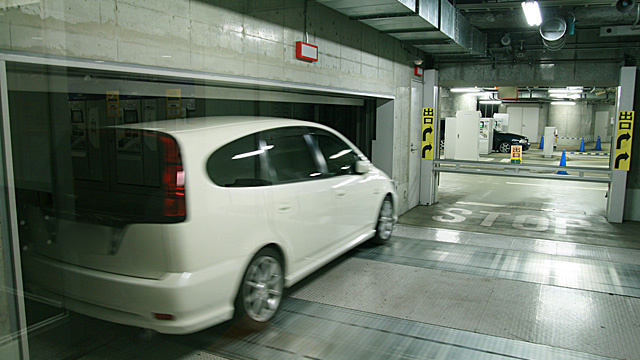
- Automated Vehicle Storage System: Automatic vehicle storage systems are provided in mechanical parking garages. When a vehicle arrives at the parking space, it is automatically moved and the vehicle is stored in the designated storage area. This eliminates the need for manual operation to park.
- High security: Automated parking reduces the risk of theft because no human hands are involved in storing the vehicle in a mechanical parking facility. Authentication is also often required to exit the vehicle, and security measures such as surveillance cameras are often provided.
- Might be small: Modern buildings are designed to accommodate larger vehicles, but in older multi-story parking garages, the elevators may be very small. Be sure to park carefully and follow the instructions of the attendant.
How to use a Automatic parking space
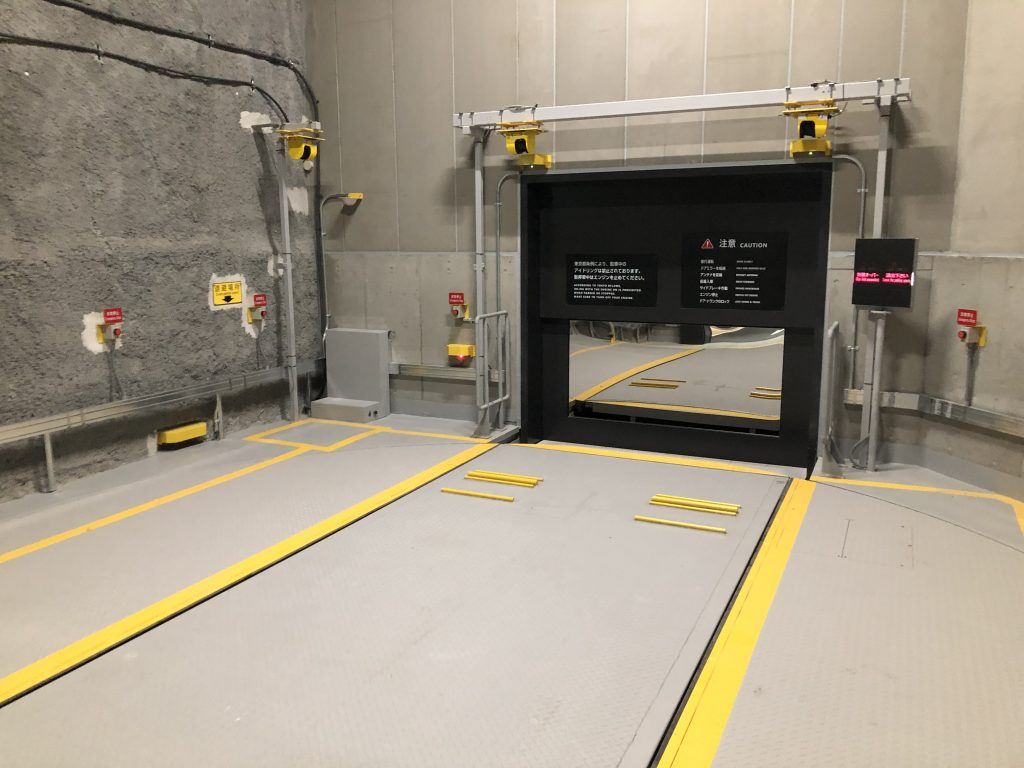
1. Arriving at the parking lot
- Arrive at the entrance of the parking garage: Most mechanical parking garages are gated and you will receive a parking ticket. (In some cases, the ticket is handed to you.) Once you pass through the entrance, proceed to the area where you will park your vehicle.
- PARK YOUR VEHICLE IN YOUR PARKING POSITION: Follow the instructions in the parking lot to stop your vehicle in the designated area. In many mechanical parking garages, there are guidelines or signs to help you align your vehicle to the stopping position. (In the newer ones, a digital sign will guide you where to stop.)
2. Storing the vehicle
- exit the vehicle: After stopping the vehicle, turn off the engine, close the doors, and fold down the side mirrors. Be sure to check that there are no passengers in the vehicle.
- Start Automated Storage: After exiting the vehicle, the system will automatically transport the vehicle and store it in the designated storage space. The user does not need to move the vehicle manually, as the automated system will safely transport the vehicle.
- Wait: Wait for the vehicle to be automatically stowed. It may take a few seconds to a few minutes to stow the vehicle, but the system usually operates smoothly.
3. When leaving the garage
- Prepare to Exit: When you exit the vehicle, settle the parking fee.
- Removing the vehicle: After settling the account, please ask the attendant to remove the vehicle from the garage.
- Complete Exit: The gate will open after the vehicle has been completely exited. This allows the vehicle to exit the parking lot. Some require backing out, while others are automatically turned around.
Points to note about automatic parking spaces
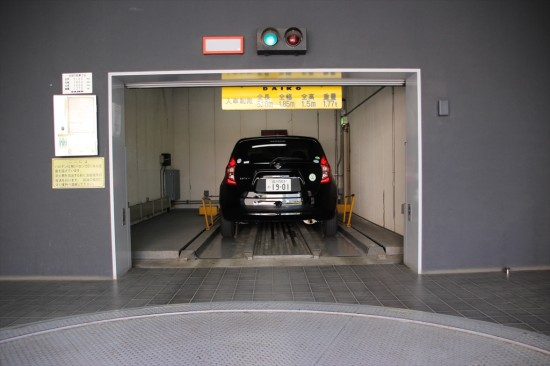
- Check vehicle size: Automatic parking spaces may have restrictions on the size of your vehicle. If your vehicle is too large (especially large cars and SUVs), it may not be available. It is important to check in advance if the size of your vehicle can be accommodated.
- Removing Luggage: It is recommended that luggage be removed prior to entering the cargo area, as it is often not possible to access the luggage inside the vehicle when the vehicle is stored.
- PAY ATTENTION TO STOPPING POSITIONS: Be careful where you stop and how you park your vehicle. If a vehicle is parked in the wrong location, the machine may not be able to properly stow the vehicle. Also, since the space may be narrow, please follow the guidance of the attendant and park your vehicle slowly.
Parking meter
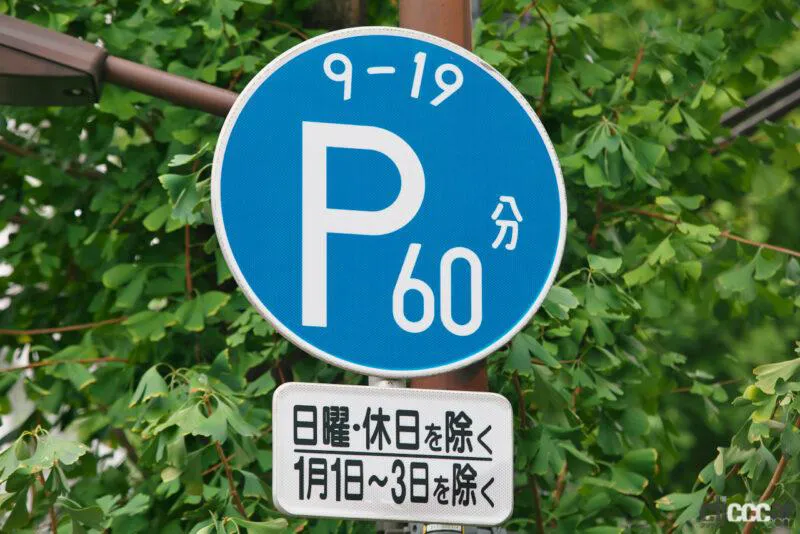
Lastly, we introduce the parking meter.
Parking meters are devices installed along roads and in parking spaces in Japan that collect parking fees by the hour. They have been introduced in urban and congested areas to address the shortage of parking spaces, and are used as a means to prevent unauthorized parking of vehicles and to collect parking fees fairly.
Since there is a time limit such as 60 minutes, it is quite limited in use, but it is good to know that you can park for 300 yen per hour even though you are in the city center.
Parking meter features
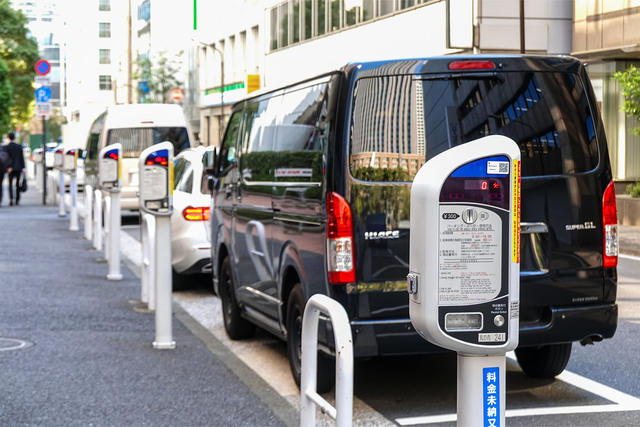
- Hourly billing.
- Parking meters typically charge parking fees on a time-based basis. Users pay for parking for a predetermined amount of time and must move their vehicles within the specified time. The sign will say 40 or 60 minutes, and you can only park for that amount of time. If you want to park longer than that, you must move your vehicle out of the slot and park again.
- Payment Method.
- Payment is mainly made in cash coins only; although parking meters that accept credit cards have been installed since 2024, they are still few and far between, so be sure to have some coins (100 yen coins) with you when you use them. 3.Available Hours.
- In many cases, the hours and days of the week when parking meters are in operation are fixed. For example, they may operate only during the daytime on weekdays, or they may be free on weekends and holidays. You can often find the hours and fee structure on signs in each area.
- Parking Time Limits.
- Parking meters usually have a maximum parking time limit. For example, there is often a set limit of “up to 40 minutes” or “up to 1 hour”. Exceeding the time limit constitutes a parking violation and will result in a fine.
How to use a parking meter
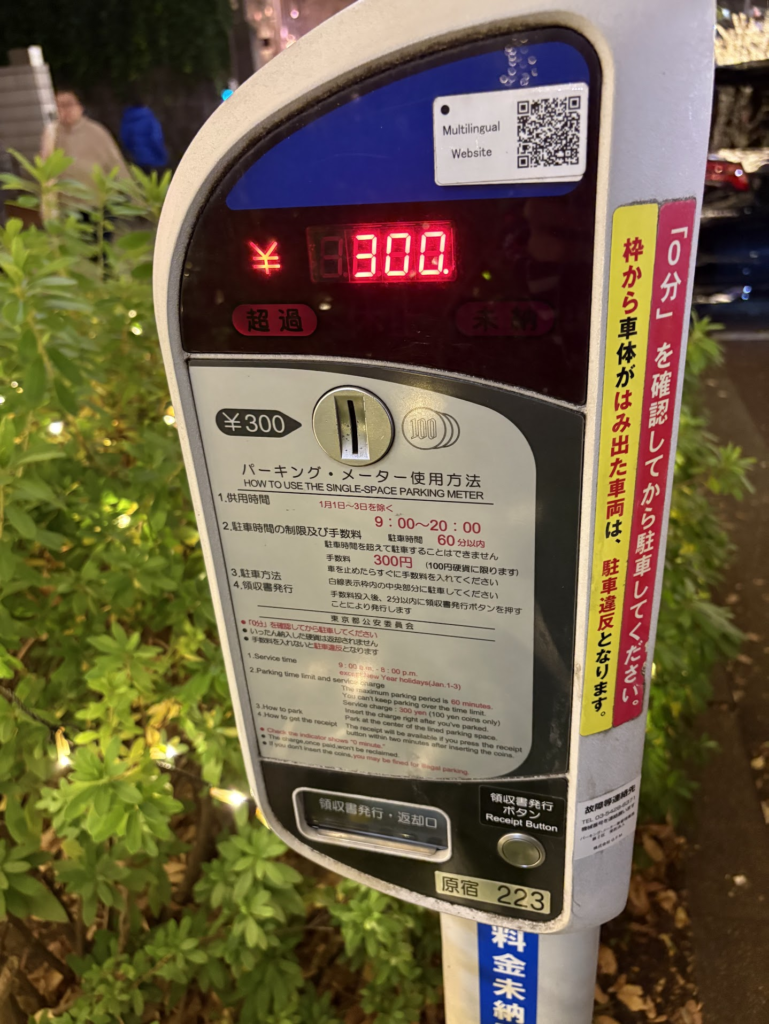
1.find a parking meter
- PARK IN A PARKING SPACE: Parking meters are located along the street; park your car where parking meters are marked. Parking spaces are often marked with parking meters, and if they are not installed, there may be another place to pay (payment machine or coin parking) nearby.
2. Pay the parking fee.
- Check the rate: When you stand in front of a parking meter, you will see information about parking rates and times on the bulletin board. Check the rates displayed (for example, “100 yen for 30 minutes” or “300 yen for 1 hour”).
- Pay in advance:.
- Pay in cash: Be sure to pay immediately after parking. By inserting coins into the meter, a parking ticket will be issued. Post it where it can be seen through the windshield. In places where parking tickets are not issued, it is not necessary to post the ticket, but a receipt should be issued just in case.
3. moving your car out of the parking space
- MOVING YOUR CAR AFTER PARKING: You must move your car as soon as your parking time is up. If you overstay your time, the police or a warden may come to check on you and you will receive a ticket.
Points to note about parking meter
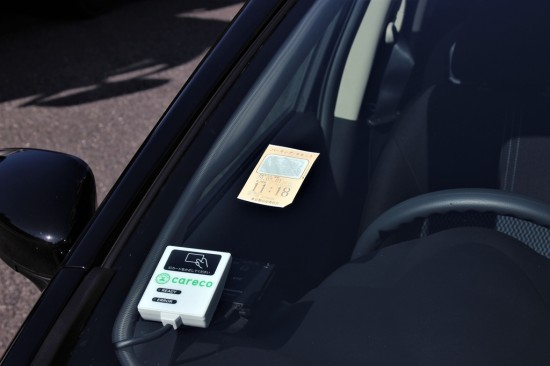
- Manage parking time.
- You are expected to move your vehicle within the time you paid for the parking meter. Be sure to adhere to the time limit. Exceeding them may result in fines or violation tickets.
- Pay in advance.
- 1Unlike other parking methods, you must pay the parking fee immediately after you park your vehicle.
Summary
In this article, we introduced parking lots, which are essential for driving. There may be some types that are not available in your country. If you find out in advance which parking lot you will use, you will be able to act smoothly on the day of your visit. We hope you enjoy your drive in Japan by reading this article!

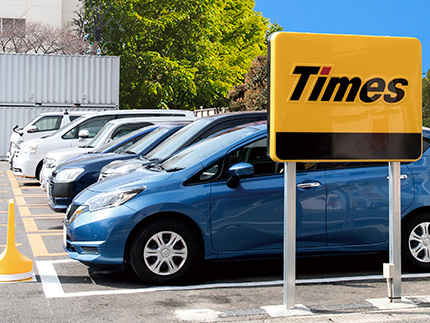


Comment Comment